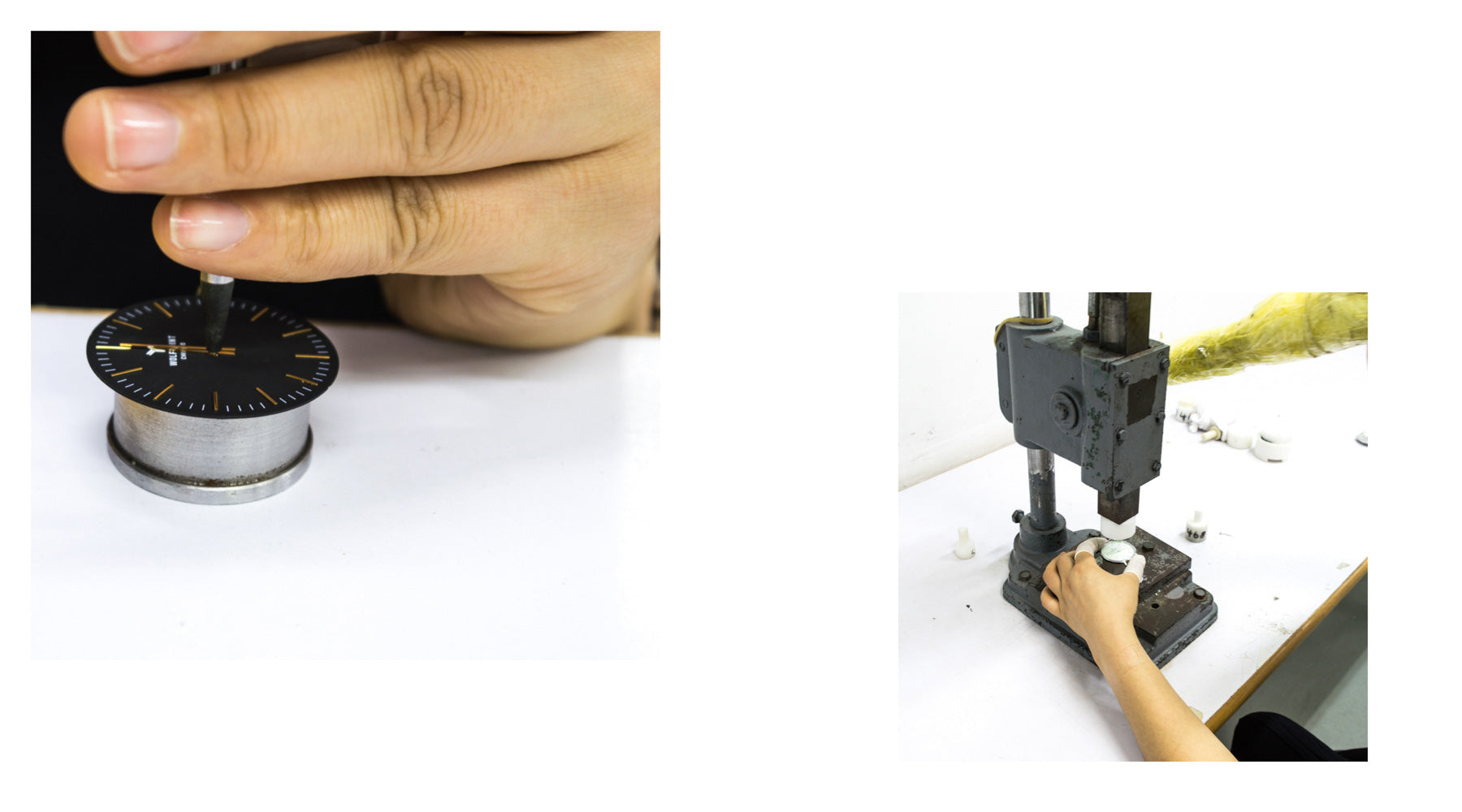Transparent Process

Rigid Testings
In Wolfpoint, we know how important it is to ensure that you get the quality and performance you are looking for when you purchase a watch from us. Each of our watch goes through a rigid level of testing.
We’ve taken this same perfectionist philosophy to our newest collection of watches.

First And Foremost Check For Water-Resistance:
Checking for water-resistance is probably the most important step to ensure you are getting what you need and should be done when inspecting our watches. Most of the manufacturers are always going to claim their watches are water-resistant at a given depth. These claims are not always accurate so it's really important that validate their claims in order to prevent any damage to the watches when you are using them.

Secondly, You Should Check Overpressure Resistance:
Watches are set to a certain pressure rating. It's important that we validate these readings. This is how we do it:
We place the watch in a pressure chamber and slowly increase the pressure over a period of one minute. When we reach the pressure rated by our assembly team and there is no indication that we should go any further, we stop the pressure at that point.
Leave the pressure at this level for a full 10 minutes.
Next, we reduce the pressure (1 ATM or Normal) gradually over the next minute.
Now we check the watch to ensure water has not penetrated the watch. If the face shows signs of water the test is a complete failure.
Check For Condensation
This is also a critical test to ensure the watch is water-resistant. The following steps will show you how we test for condensation:
Step One – Heat:
We place the watch on a hot plate with a temperature of 104 ⁰F – 113 ⁰F. We leave the watch in place until it has reached the same temperature.
We add a drop of water that reads 64 ⁰F – 77 ⁰F in temperature to the watch's face.
We leave it alone for a minute then wipe the glass with a dry cloth.
If condensation appears on the interior of the glass, the watch has failed the condensation test.
Step Two – Immersion:
We place the watch in water at a depth of ~ 4 in (10 ± 2 cm) with a temperature of 68 ⁰F and 104 ⁰F and leave for 5 minutes each. Conversion time between the temperature changes should not be more than one minute.
Once complete, we repeat the first step using the hot plate.
Step Three – Operating Parts Immersion:
We place the watch in water at a depth of ~ 4 in (10 ± 2 cm) with a force of 5N at a right angle to the crown and push the buttons (if applicable) and then leave for 10 minutes.
Again, repeat the first step using the hot plate.
Checking For Accuracy:
This step takes a little more time as we must regularly check to make sure the watch is keeping accurate time for the next 24-hours. This includes the hours, minutes, and seconds. Repeat this step again for another 24-hours.
For a quartz watch, it should have a tolerance of + 1 seconds a day.
Checking The Battery Power:
Let's face it, if the battery is not providing the correct power to the watch, it will be inaccurate. Checking the battery is especially important. It's not unusual for some other manufactories to replace the required battery with something that is cheaper. Unfortunately, this causes poor performance by the watches because these cheaper batteries are not pulling enough power for the watch to operate properly.
Using a multimeter will verify the battery voltage. The voltage should not go below the watch's recommended voltage that should be provided with the watch. We also check the expiration date of the battery to ensure it meets our standards.
Check For Proper Performance After An Accident:
When someone accidentally bumps the watch against a desk or wall, the watch should still perform properly. We perform a simple test to ensure our watches will keep on ticking:
Slam the watch against the palm of our hand.
Check the hands of an analog watch to ensure they are operating properly. Then check that there are no irregular movements or wobbling of the crown.
Check The Crown's Movement:
There should not be any irregular movement (or wobbling) from the crown when pushed in. All movements should be smooth.
The Watch's Hand Alignment:
Set to 3:00, 6:00, 9:00, and 12:00 and then verify the hour, minute, and second (if applicable).
Check For Fatigue:
This is an important step because watches are worn continually and are supposed to hold up for a long period of time. Outside of inspecting that a watch will run properly for several hours, there are two checks that should be performed:
The Condition Of The Wristband:
The connection between the frame and the bands should not have any signs of wear and tear.
The Crown's Durability:
The crown should always perform smoothly so run a simple test by pushing and pulling approximately 50 times to make sure there are no irregularities.
